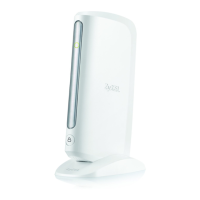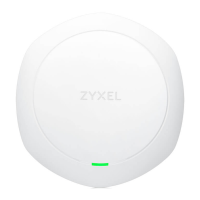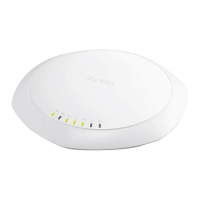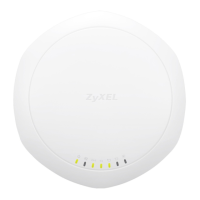Chapter 10 Operation Mode
WAP6806 User’s Guide
58
Figure 45 WEP Encryption
The following table describes the labels in this screen.
10.4.2 WPA-Personal / WPA2-Personal / WPA/WPA2-Personal Mixed
Wi-Fi Protected (WPA) is a subset of the IEEE 802.11i standard. WPA2 (IEEE 802.11i) is a wireless
security standard that defines stronger encryption, authentication and key management than WPA.
Key differences between WPA or WPA2 and WEP are improved data encryption and user
authentication.
If both an AP and the wireless clients support WPA2 and you have an external RADIUS server, use
WPA2 for stronger data encryption. If you don’t have an external RADIUS server, you should use
WPA-Personal that only requires a single (identical) password entered into each access point,
wireless gateway and wireless client. As long as the password match, a wireless client will be
granted access to a WLAN.
If the AP or the wireless clients do not support WPA2, just use WPA or WPA-Personal depending on
whether you have an external RADIUS server or not.
Select WEP only when the AP and/or wireless clients do not support WPA or WPA2. WEP is less
secure than WPA or WPA2.
Select WPA-Personal, WPA2-Personal, or WPA/WPA2-Personal Mixed from the Encryption
Type list.
Figure 46 WPA-Personal, WPA2-Personal, or WPA/WPA2-Personal Mixed
Table 22 WEP Encryption
LABEL DESCRIPTION
Key Index Select one index for configuring a key. The default key index is Key 1. You must
configure at least one key, and only one key is activated at one time.
WEP Key WEP keys are used to encrypt data. Both the WAP6806 and the wireless stations must
use the same WEP key for data transmission.
ASCII - Select this option to enter ASCII characters as a WEP key.
Hex - Select this option to enter hexadecimal characters as a WEP key.
Confirm 2.4G Click Confirm 2.4G to save your changes.

